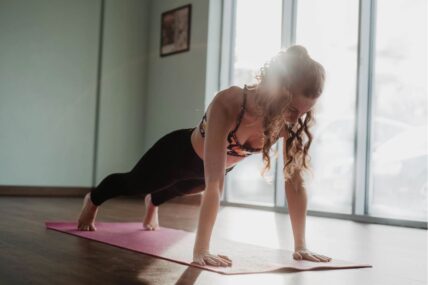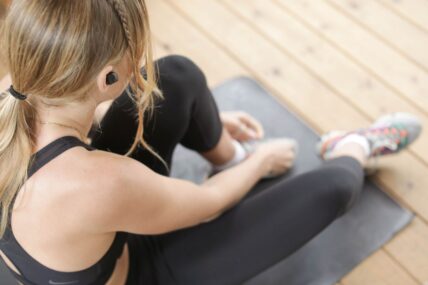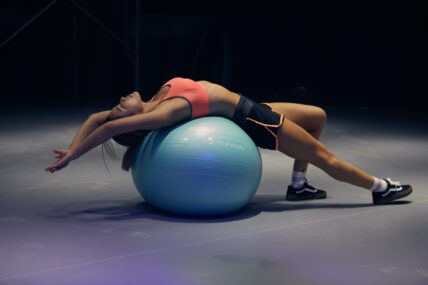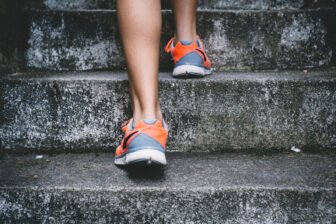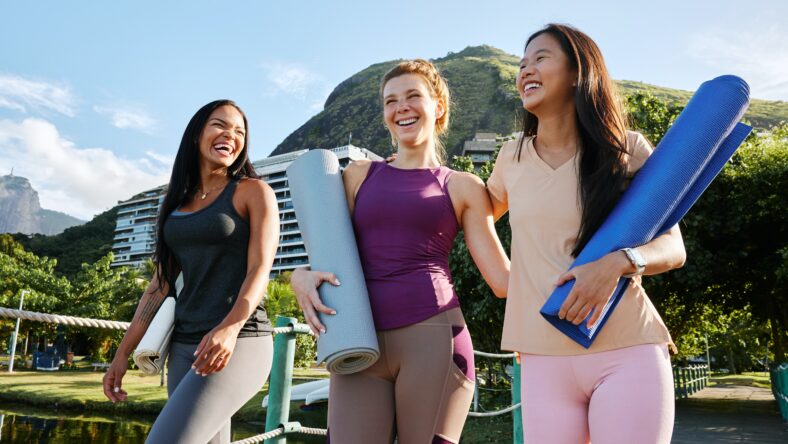
The term “low impact workouts” refers to workouts that exclusively use joint-friendly activities.
They are advantageous because they allow everyone—including the elderly, the physically unfit, and the injured—to exercise comfortably and without suffering.
This article is for you if you’re interested in low-impact exercise but are unsure of what low impact workouts are or which low-impact exercises are efficient.
Here, you’ll discover what low impact workouts are, why they’re advantageous, the various kinds of low impact workouts, the top low-impact cardio and strength training programs, and more.
What Are Low Impact Workouts?
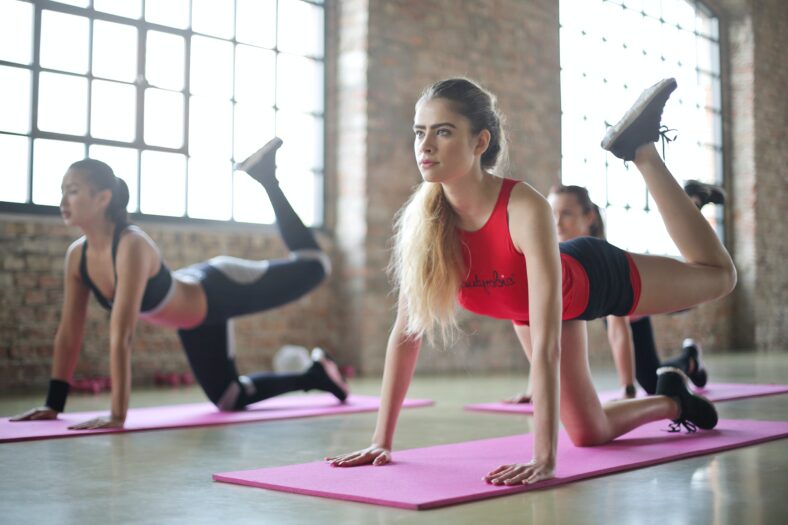
According to Joann Walker, DPT, a physical therapist and board-certified expert in sports and orthopedics at the Ohio State University Wexner Medical Center in Columbus, low-impact exercise is any activity that doesn’t put a lot of strain or weight through the joints.
According to the Hospital for Special Surgery, an exercise must not put more strain on the joints to qualify as low-impact. The joints are under a lot of stress during high-impact workouts like jogging and jump training (plyometrics). When you ascend away from the earth, gravity and your body weight work as forces on your body, according to Heather Milton, MS, CSCS, a board-certified clinical exercise physiologist at NYU Langone Health in New York City.
High-impact activities’ stress can be good for your bones since it encourages them to form fresh, stronger tissue. Milton points out that if your muscles, joints, and connective tissues aren’t strong enough to manage it, it can potentially do injury to them.
Without putting stress on the joints and connective tissues, low impact workouts provide many of the same health advantages as high-impact ones. Walking meets the criteria for low-impact exercise, but Milton also lists cycling, rowing, and elliptical training as low-impact activities because your feet never leave the pedals. Dr. Walker points out that a variety of resistance exercises, such as weightlifting, Pilates, yoga, and barre, are also regarded as low impact workouts.
Also Read: What Muscles Does Rowing Not Work?
Swimming and water aerobics are exceptions to the norm; even though your feet may not contact the ground, Piedmont Healthcare reports that the water absorbs most of the impact. However, a low-impact workout doesn’t always imply a low-intensity activity. Cycling is a low-impact exercise that may also be done at a higher level of intensity. Low impact workouts are a great way to “really stress that heart rate response,” according to Walker.
You may create a well-rounded low-impact regimen because low-impact exercise covers a wide range of disciplines, including mobility, flexibility, strength, and aerobics. The objective is to engage in activities that help you meet the U.S. Department of Health and Human Services’ (HHS) Physical Activity Guidelines for Americans, which call for 150 minutes of moderate-intensity aerobic activity and two days of muscle-strengthening each week.
Potential Health Benefits of Low Impact Workouts

The benefits of low-impact exercise are as diverse as the low-impact exercise activities themselves. Let’s look at some of the potential health advantages:
5. Better Heart Condition
Comparable heart health advantages are provided by walking and running, two high-impact aerobic activities. In fact, following a six-year follow-up, researchers who looked at 33,060 runners and 15,045 walkers (ages 18 to 80) discovered comparable decreases in risk for high blood pressure, high cholesterol, diabetes, and perhaps heart disease. That is, if the walking was done at a reasonable pace. The results were released in Arteriosclerosis, Thrombosis, and Vascular Biology in May 2013.
4. Reduced Chance of Diabetes
Your risk of developing type 2 diabetes can be lowered by numerous low-impact exercises. Combining walking with a balanced diet may reduce your chance of developing diabetes more effectively than drugs. In a 3,234-person National Institutes of Health study, participants who paired dietary adjustments with 150 minutes of moderate-intensity exercise over the course of a five-year trial period lowered their risk of type 2 diabetes by 58 percent. While those who used the blood sugar-controlling medicine metformin as a preventative measure reduced their risk by 31%. According to a 15-year follow-up research, 56 percent of the metformin group, 62 percent of the placebo group, and around 55 percent of the lifestyle group all acquired diabetes.
Strength training can also help persons with type 2 diabetes manage their blood sugar levels, according to a meta-analysis of eight research that was published in June 2017 in Diabetes Therapy. Your risk of complications from diabetes may be reduced as a result.
Check Out: We Are 100% Here for Snackable Workouts
3. Enhancing Joint Health
People with joint problems have the option to exercise with less pain and discomfort by participating in low impact workouts. According to the Arthritis Foundation, low-impact exercise may also improve joint health and function by lubricating stiff, sore joints and delivering blood and nutrients.
People with osteoarthritis, a “wear and tear” joint disease, may find relief from joint pain and stiffness by engaging in low impact workouts like swimming and cycling. In one trial, 45 minutes of swimming or cycling three days a week were provided to 48 middle-aged and older persons with osteoarthritis. Both groups saw significant reductions in joint pain and stiffness as well as quality of life after completing the 12-week programs.
2. Better Bones
According to Milton, particular low impact workouts, such as cycling and swimming, aren’t the best because bone building requires weight-bearing workouts. Other low impact workouts, however, are very powerful. One of the finest things you can do for bone density, according to Milton, is strength training.
In one study, 101 postmenopausal women with poor bone mass underwent a 30-minute, twice-weekly high-intensity strength training program. After eight months, the participants’ bone density significantly increased.
1. A Better State of Mind
Walking is a low-impact exercise that can help keep your brain healthy and may even help you avoid dementia, which is the loss of thought, memory, and reasoning. Researchers examined health and exercise data acquired from more than 78,000 healthy UK people over a seven-year period for a study that was published in JAMA Neurology in 2022. They found that people who walked more than 3,800 steps per day were 51% more likely to develop dementia than people who walked less than 9,800 steps per day, or about five miles.
Can You Get Toned with Low Impact Workouts?
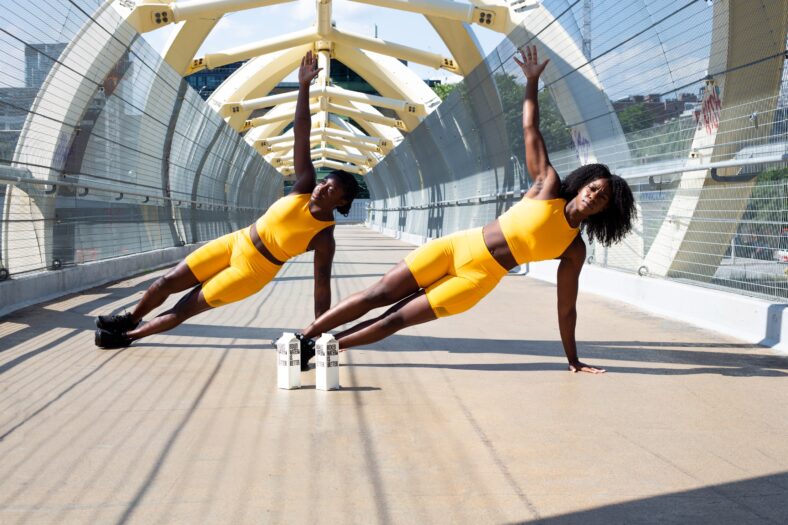
When coupled with a healthy, balanced diet, low impact workouts can help with weight loss, according to Lalitha McSorley, a physiotherapist at Brentwood Physiotherapy Clinic in Calgary, Alberta, Canada.
Low impact workouts help you burn calories and create the calorie deficit required to lose weight. Despite the fact that some low-impact workouts burn fewer calories than others. For instance, according to Harvard Health, a 155-pound person works out with conventional weightlifting for 30 minutes and burns an average of 108 calories. In comparison, the same person burns 198 calories for the same length of time while engaging in low-impact aerobics.
Resistance training’s capacity to develop muscle, however, may help with weight loss. A previous study found that muscle burns more calories at rest than fat since it is a metabolically active tissue. When combined with caloric restriction, this might aid in weight loss. These conclusions came from a systematic review and meta-analysis that was written up in February 2022 in Obesity Reviews. Additionally, low impact workouts are less taxing on the joints than high-impact ones, allowing you to maintain an active lifestyle without wearing out your body, according to McSorley.
Consider a low-impact exercise program if you want a fitness regimen that is easy on your body but challenging enough to rev up your metabolism. You may engage in high-intensity cardio and strengthening exercises with these workouts without having to put up with the jarring action that occurs with exercises like box jumps, burpees, jogging, and lunge leaps.
Check Out: 10 Great Travel Workout Tips for Staying Fit on Vacation
Low-Impact Strength Training Workouts
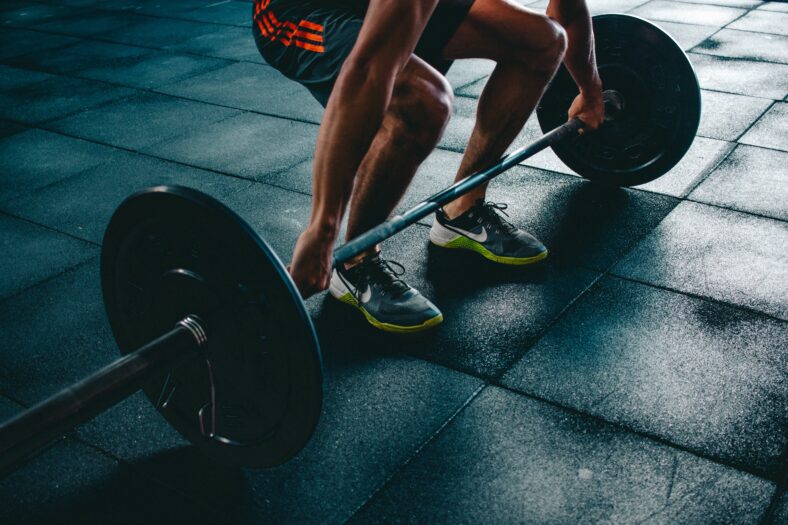
Weightlifting exercises that are kind to your joints are a part of low-impact strength training programs. The majority of upper-body strength training activities are ideal for inclusion in a low-impact workout because they rarely entail jarring motions. However, some exercises for the upper body are “gentler” on your joints than others, so you should focus on those.
Dumbbell and machine movements, for instance, are typically more suited for low impact workouts than barbell exercises.
This is because machine exercises don’t require as much stability as free-weight exercises, which relieves some of the pressure on sore joints, and dumbbell exercises let your limbs to move more freely than barbell exercises do, allowing you to adjust your motions to prevent pain.
Belt Squat Machine
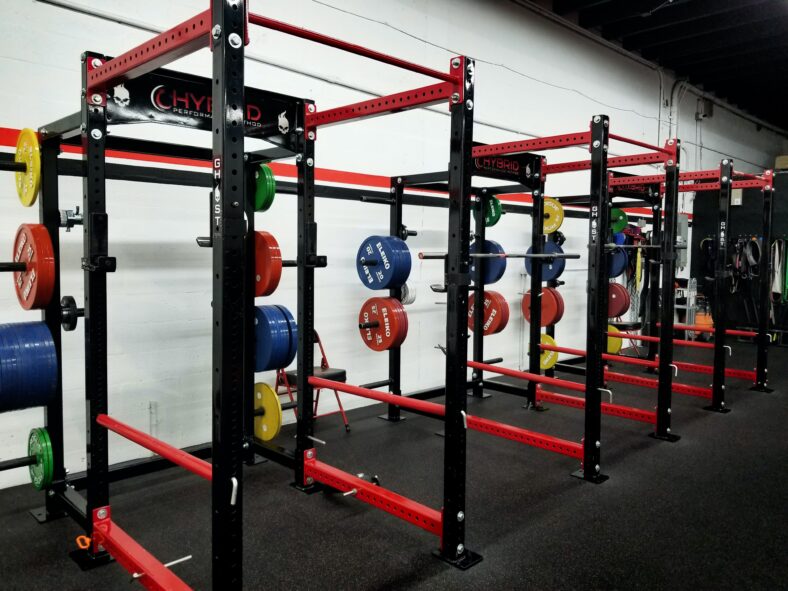
Back squats are a powerful exercise. Unfortunately, it puts a lot of strain on your back, knees, and even shoulders—even with proper technique. Although it’s not awful—in fact, it helps your muscles grow stronger—doing too much of it can be detrimental and even cause lower back pain.
This is why we adore utilizing the belt squat machine since it works well when you want to put more volume on the legs while keeping your back relaxed and when you have back problems. The belt squat still exerts pressure on your knees, but it’s usually more pleasant because it causes you to move backward rather than forward, which can increase stress.
Advice on using the belt squat machine
- Place your feet shoulder-width apart as you stance over the pulley. Put your feet hip-width apart to better target your quadriceps muscles.
- Ensure that your feet are square.
- Use as a burnout set, strength set, or hypertrophy set. It works in any exercise.
- If you want to be slightly in front, the belt will pull your hips down.
- Use a dip belt and two boxes in the absence of a squat belt machine at your gym.
Also Read: Yoga Ball Bouncing: What Are the Benefits of This Exercise?
Carries or Holds
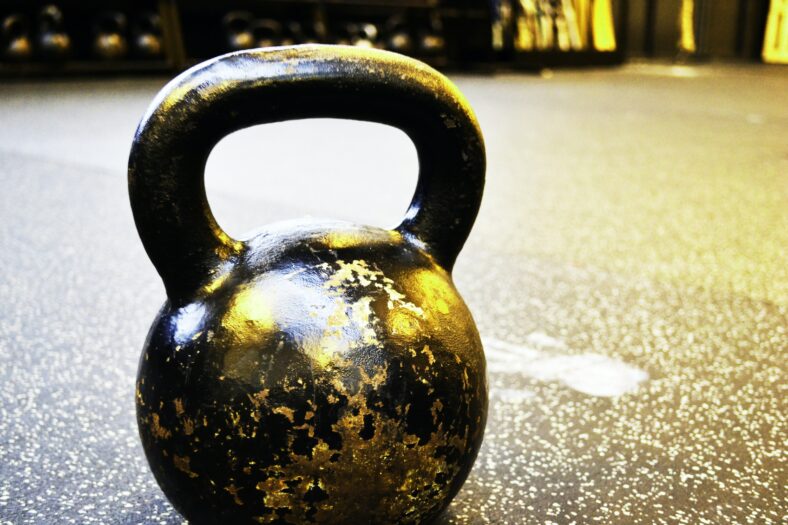
Farmer’s walks and front carries (carrying a heavy medicine ball at chest level) are common holds or carries in Strongman training programs. As both variables can be trained, these workouts are ideal for low impact cardio or strength increases.
Your limbs have minimal to no flexibility when doing these workouts. For instance, you hang your arms straight down when doing a farmer carry. It’s actually bad form to flex your arm. Additionally, every carry will require you to maintain a tight core during the whole movement. As a result, they rank among the best functional movements available for low impact workouts.
If you’re still unsure, remember that we advise these exercises for pretty much every athlete who wants to gain strength or hypertrophy. This demonstrates that they are a strong alternative for people with aching joints. Throwing in carries on a regular basis will help you succeed while protecting your joints, no matter what your fitness objectives are and whatever level of fitness you are already at.
Our preferred grips and carries consist of
- Farmer Carry
- Front Carry
- Overhead Carry
- Sandbag Hold
Sled Workout
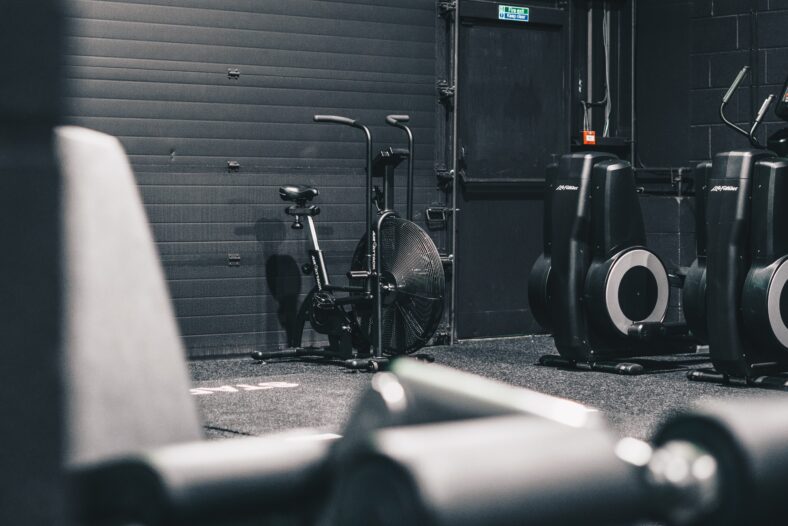
Sleds are an incredible additional method of training used in Strongman. Exercises involving the pushing and pulling of sleds will exhaust you completely. We’d like to highlight three different sled training techniques: pushing a sled, pulling a sled while facing backwards, and pulling a sled while facing forward.
All of these fantastic variations will work every muscle in the body while limiting the range of motion in the joints compared to many other workouts. And they nevertheless provide an intense leg workout even with modest flexion and extension in low impact workouts.
Neutral Grip or Dumbbells
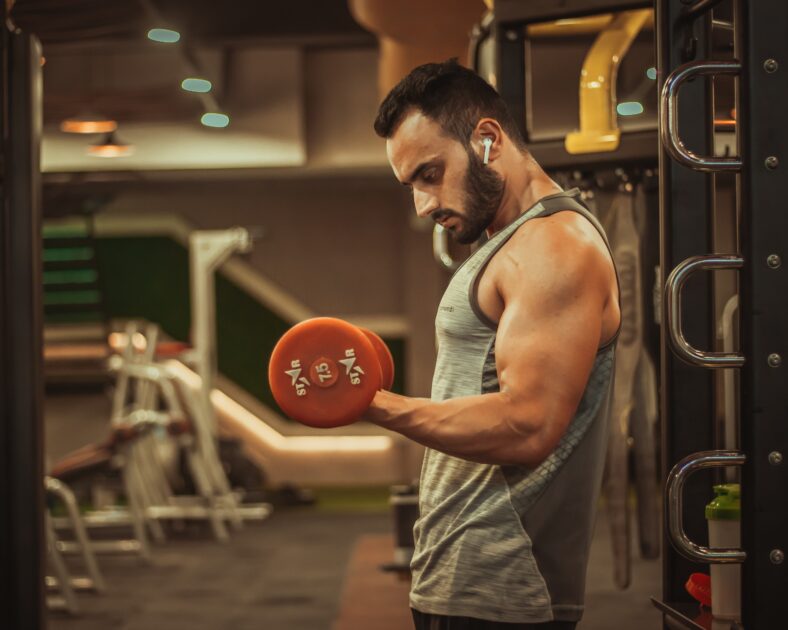
Tennis elbow, golfer’s elbow, and elbow joint pain in general can cause major issues for a lifter or fitness enthusiast. The simple act of using a neutral grip is one of the simplest ways to reduce stress. Pick up a pair of dumbbells if that isn’t an option (maybe you don’t have the necessary equipment). Dumbbells can not only be held with a neutral grip but also help to relax the shoulders.
For instance, utilize dumbbells or, if possible, a Swiss bar when performing the bench press. Use a neutral grip to complete pull-ups.
Also Read: What Is the Best Cardio for Abs?
The Best Low Impact Cardio Workouts
7. Stair Climber
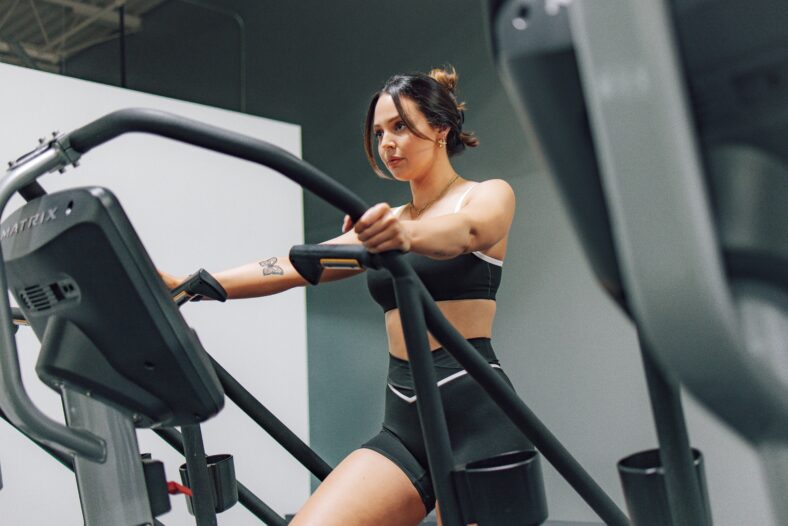
Stair climbers are a fantastic low impact cardio exercise that can help you tone your lower body and lose weight while also enhancing your cardiovascular health. A stair climber is just a rotating stairway that you ascend by first lifting your left leg, then your right leg. It really is that easy.
We could go on and on about the advantages of stair climbers, but their main benefit is that it allows you to undertake high-intensity training without overtaxing your joints in low impact workouts. This is due to the fact that you are putting your foot on an elevated surface rather than letting it hit the ground hard, allowing for a “soft” landing. However, stair climber exercises can get extremely difficult very quickly. Ask any firefighter.
Advice on strong form
- Keep your core tight and your torso upright for optimal form, firmly plant a foot on the following platform, and hold the rails only if necessary.
6. Elliptical
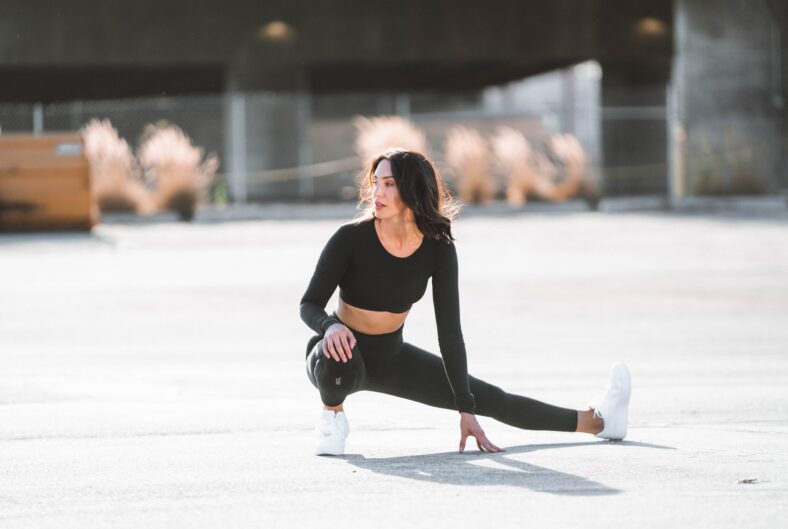
The elliptical is evidence that cardio may be done without running. All you require is the proper exercise machinery. Cycling and running, an incredible combo for staying in the fat-burning zone, are combined on the elliptical to attain its distinction as a top low impact cardio workout. It makes use of two rotating foot platforms to do this.
Running requires the foot to land with excessive power, whereas on an elliptical, the foot never leaves the platforms, reducing unnecessary force for low impact workouts. Most also feature two movable grips that enable upper body exercise. In fact, the elliptical machine is excellent at working both the upper and lower body muscles when it comes to elliptical exercises.
You can also decide to use either one of the platforms for the hands or feet, if you’d like.
When it comes to form, the motion is akin to running since you bend your knees as you lift your leg. Keep your torso upright the entire time. Do not forward lean!
5. Stationary Bike or Cycling
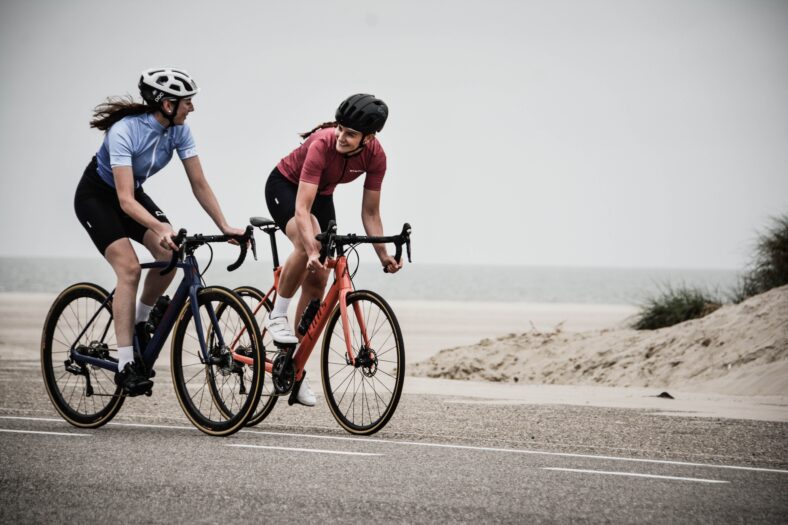
You’ll appreciate all the advantages a stationary bike offers for low impact workouts. In fact, it’s possible that this training method is the greatest for a true low-impact cardio workout. To be clear, all of these devices are functional, but cycling tends to encourage individuals to work more and more quickly.
Recall how we stated “low-impact” exercises aren’t always low-intensity ones? The most well-known type of high intensity interval training, however, is notorious for utilizing cycling. Of course, we’re referring to Tabata. Yes, the cycle ergometer was used to do the initial Tabata protocol, and this is still the form that is most frequently recommended. It’s cardiovascular exercise with low impact.
Cycling and using a stationary bike are both excellent additions to any workout regimen. Any fitness level of athlete can use either one to increase cardiac endurance or aid in calorie burning.
Cycling advice to remember
- Cycling quickly should always be done under control. As you accelerate, it’s typical for your biomechanics to get choppy.
- Push one pedal all the way down as you place the bike in the beginning position. Next, adjust the seat such that your knee slightly bends when you place your foot on the low pedal.
- Setting the settings too high is one of the biggest cycling mistakes individuals make. Excessive knee tension will result from even a few inches of error.
4. Skiing
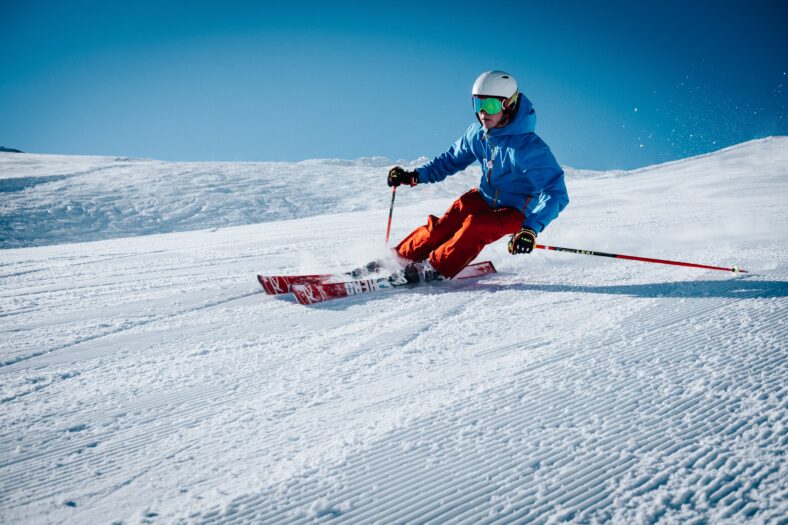
A SkiErg is made specifically to work the upper body. If you’ve ever gone cross-country skiing, you know how much we enjoy it. This low-impact exercise was inspired by a game known for burning absurd amounts of calories, so you should definitely include it in your rotation of low impact workouts.
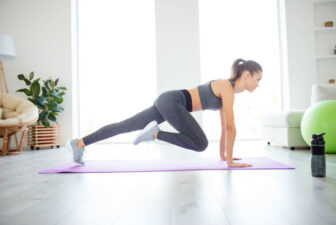
We Are 100% Here for Snackable Workouts
3. Rowing Machine
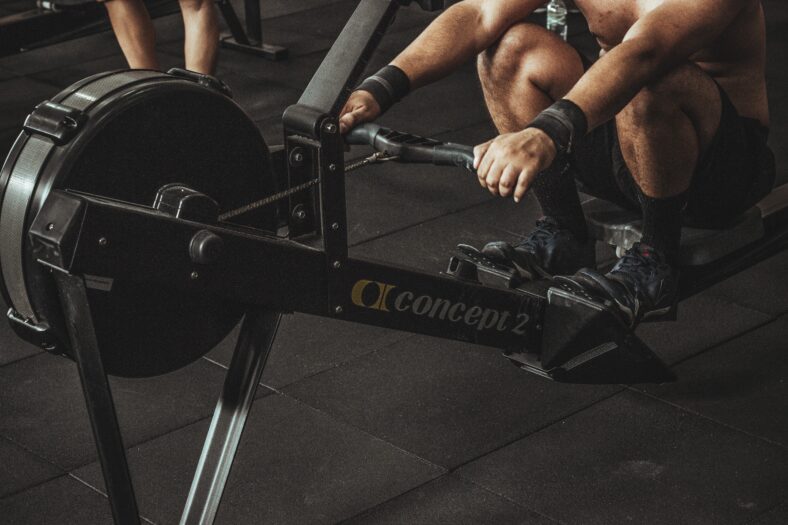
This is a true all-around full-body workout and great for anyone wishing to get some cardio and vary their low impact workouts.
Advice for Rowers
- Lean forward and extend your toes when you row.
- When you return, it will be in this order: Legs extended, back extended, pull with arms. Repeat.
2. Rock Climbing

The human species’ most amazing example might be a rock climber. And it’s not exaggeration. It is extremely amazing how certain men and women can grip onto a lip that is less than an inch wide and climb up vertical structures with low impact workouts.
Oh, and they have amazing physiques as well, with no negative effects from their exercise. It’s important to note that although there is no jolting impact, their joints probably endure tension as a result of the incredibly strong muscular contractions. All of your muscle groups, especially your grip strength, will be significantly strengthened by rock climbing, which also has numerous cardiovascular advantages.
1. Swimming

Swimming is our go-to full-body, low-impact cardio exercise, but it’s by no means the least important. While the lower body may come to mind first when you think of swimming, the upper body may get a better exercise. Consider this. Which exercise is more difficult: body squats or pull-ups and chin-ups?
You would be right if you chose the latter as your response! Because they require employing smaller muscle groups to move the same amount of weight, pull-ups and chin-ups are harder.
Swimming likely has the lowest impact on the joints when compared to all the other low impact workouts. Simply said, weight is greatly reduced because the body is experiencing neutral gravity.
Nevertheless, swimming is a demanding kind of aerobic exercise with a low risk of injury that will unquestionably enhance your body composition by promoting muscle growth and fat reduction.
Advice on Swimming
- Swimming is difficult and can require some time to increase cardio. But if you put in the effort, you’ll succeed.
- The legs should trail back regularly during swimming, with the power coming from the hips rather than the knees. When breathing, turn your head to the left when your left arm is extended straight back, and your right arm when it is.
Is Low Impact better than HIIT?
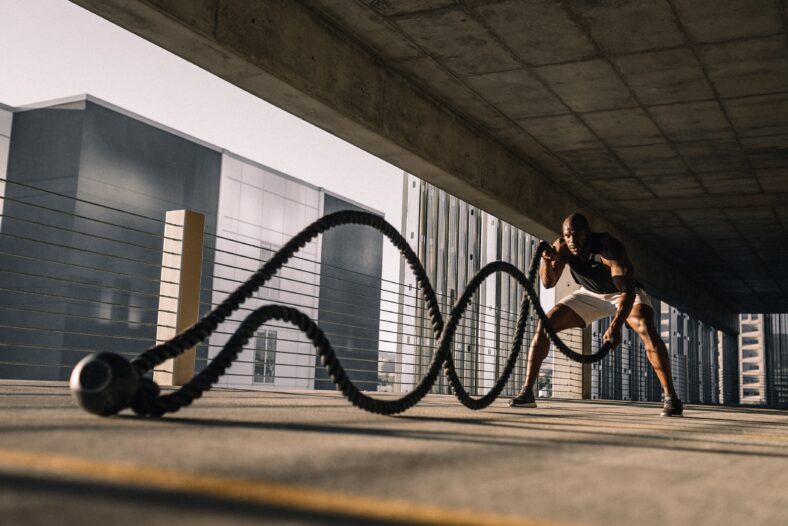
Adults in good health can benefit from both HIIT and long, gradual endurance exercise to increase their aerobic fitness (heart and lung function). Both high-intensity and low-intensity exercise have been shown to have positive effects on heart health, however HIIT often results in greater gains in aerobic fitness. However, because to the intensity of HIIT, research advises giving your body around three days in between sessions to recover, unlike low impact workouts.
Due to the strong loading required by HIIT, people with bone and joint issues may not find it enjoyable. A heart attack is five times more likely to occur after an HIIT session than after other types of exercise in higher risk cardiac patients, even though HIIT is generally safe for those with heart issues. However, in both healthy individuals and those with health issues, the advantages of any exercise frequently outweigh the hazards.
Check Out: Do Micro Workouts Tone Muscle? Here’s Everything We Know
Gear: What You’ll Need
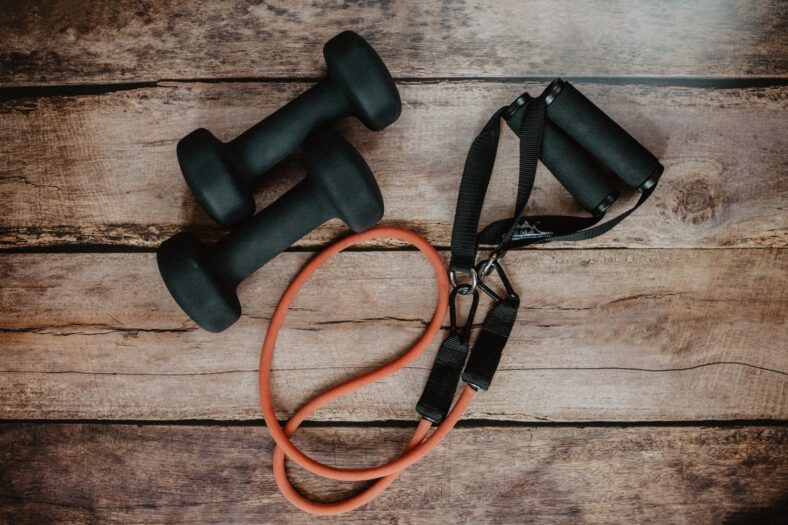
Shoes
You’ll need supportive footwear unless you’re swimming or engaging in mat-based exercises like yoga or Pilates. Purchase shoes that are specifically made for the sport you prefer (such as cycling or walking shoes) for low impact workouts.
According to Michael Hamlin, CSCS, owner of Calgary, Alberta, Canada’s EverFlex Fitness, walking shoes are totally acceptable for ellipticals and rowers as well. For strength training exercises, choose a cross-training shoe with little padding and a large toe box. According to Hamlin, the broad toe box allows our toes to spread out further, providing a more sturdy foundation for support during strength training.
Resistance Bands
Resistance bands let you to perform low impact workouts with a modest bit of increased resistance, which is why Hamlin loves them for low-impact work. According to the Cleveland Clinic, these resistance training equipment resemble giant rubber and available in a variety of designs, including flat loops and elastic tubing with interchangeable grips. Purchase a set of resistance bands to experiment with different tension levels.
Yoga Mats
Using a yoga mat will help keep your knees safe while performing floor activities in your low impact workouts. If exercising on a slick surface, it also provides a non-slip surface. In order to reduce the amount of material between your feet and the ground, Hamlin advises searching for a thin yoga mat rather than a thick foam one. I want my customers to be aware of every aspect of their movements, from a change in weight to the way their toes are tucked into their shoes, he says.
Dumbbells
Once bodyweight strength workouts become simple, a pair of dumbbells provide an easy way to add resistance. Hamlin advises beginning with basic neoprene dumbbells that are, generally speaking, 5, 8, and 12 pounds for ladies and 8, 12, and 15 pounds for men.
Sweatproof Clothes
While some low-impact workouts can be fairly strenuous and cause you to sweat just as much as a high-impact exercise would, McSorley notes that while they are generally friendlier on the joints. It’s crucial to dress appropriately because of this. McSorley advises exercising in loose-fitting, breathable clothing composed of moisture-wicking materials, such as bamboo, wool, polyester, spandex, and nylon.
Getting Started Safely
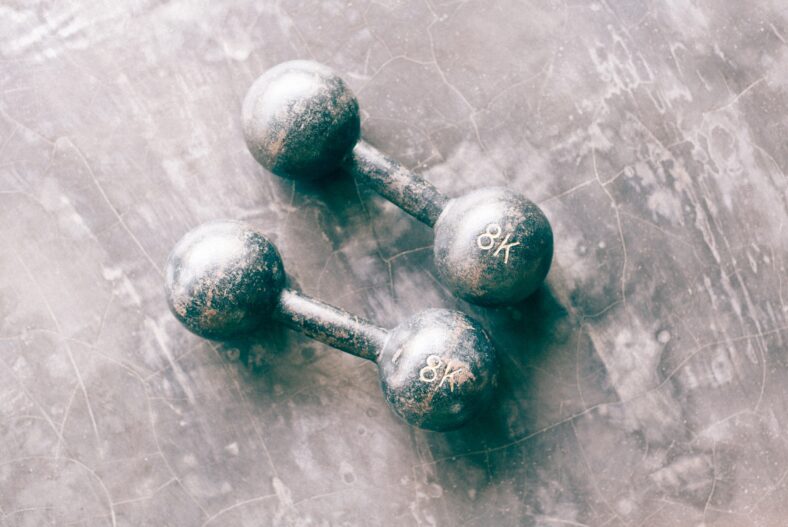
Be aware that just because a workout has a low impact doesn’t mean it’s risk-free before you start. Before beginning any exercise program, anyone with recent injuries or operations, as well as those with continuing medical issues including arthritis, diabetes, and heart disease, should consult their doctor, advises the National Institute on Aging. Use these suggestions to begin low impact workouts after receiving the go-ahead from your healthcare professional.
Starting Slow
If you’re new to your chosen activity, it’s crucial to undertake low impact workouts with the same caution as high-impact exercise. Although low impact workouts may be easier on your joints, overdoing it can still result in injury. Swimming is low-impact, but because you encounter resistance from the water with each arm stroke, Milton warns that if you swim frequently and your shoulders aren’t prepared, it could cause injury.
Start with a workout that feels manageable in both length and intensity. Walker advises starting modest and progressively increasing your duration, frequency, and intensity.
Beginner-Friendly Exercises
Although most low impact workouts are suitable for beginners, some are simpler and less demanding. Walker suggests riding while stationary and walking as excellent options for novices. In the meanwhile, resistance bands, modest weights, and bodyweight workouts provide a starting point for strength training. The weight you choose can significantly affect how tight your joints feel if you have joint problems, according to Hamlin. “Start with your own body weight and work your way up from there.”
Check Out: What Are Good Mornings and What Muscles Do They Work?
How Long Should I Do a Low Impact Workout?
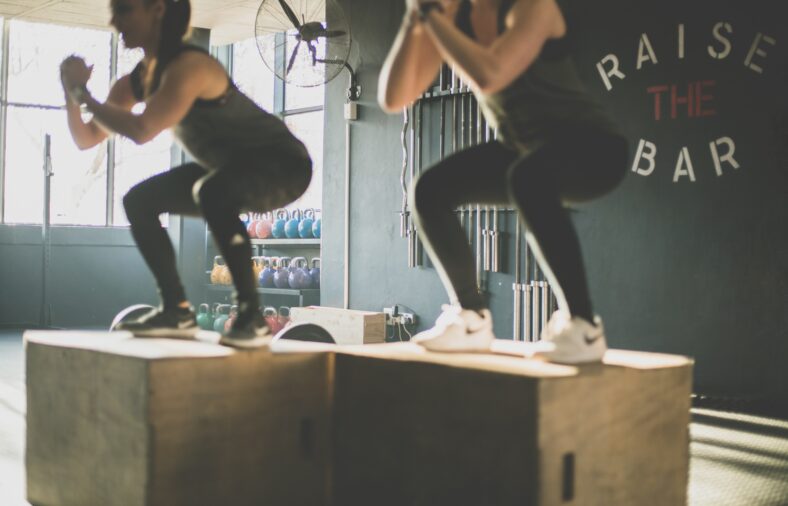
Low impact workouts are not an exception to the rule that all exercises include a risk of injury. Recognize when your body is telling you to reduce your intensity. One sign that you’re overdoing the activity is excessive muscle discomfort. Some discomfort following exercise is normal, but Walker advises scaling back if you’re still really sore 48 hours later, meaning you can’t move about easily. Another indication to relax is joint pain or discomfort.
Be Aware of Pain
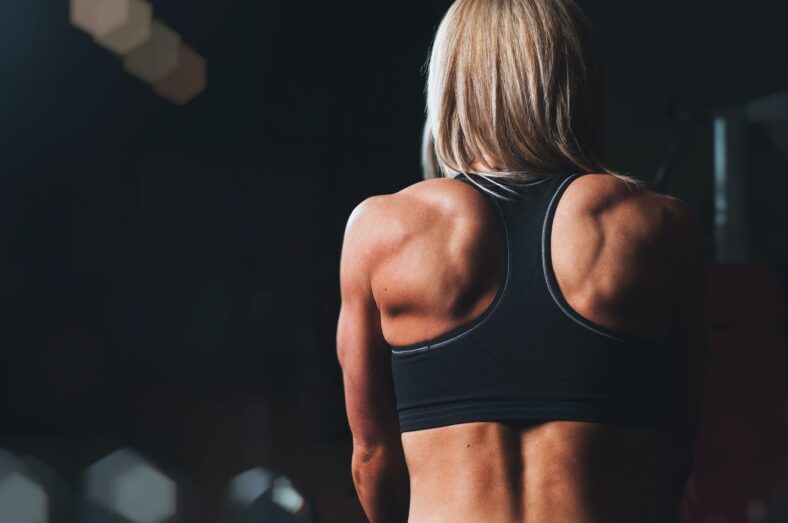
Concentric, isometric, and eccentric contractions are the three different types of muscle contractions. An eccentric contraction occurs when the muscle lengthens and relaxes, whereas a concentric reaction occurs when the muscle shortens and pulls. When you push the barbell during a bench press or pull the bar to your chest during a barbell bent-over row, you are often performing the “up” portion of the exercise.
When the object is lowered, eccentric contractions—when the muscle lengthens—typically take place. Although many individuals are more interested in concentric contractions, eccentric contractions are more important for strength and hypertrophy.
When performing isometric exercises and low impact workouts, the muscle maintains the same length while maintaining body alignment. These include workouts like holding a plank or sitting against a wall. The best strategy is to identify which contraction hurts and then concentrate more on the other two until your joint pain is relieved.
Increasing Difficulty
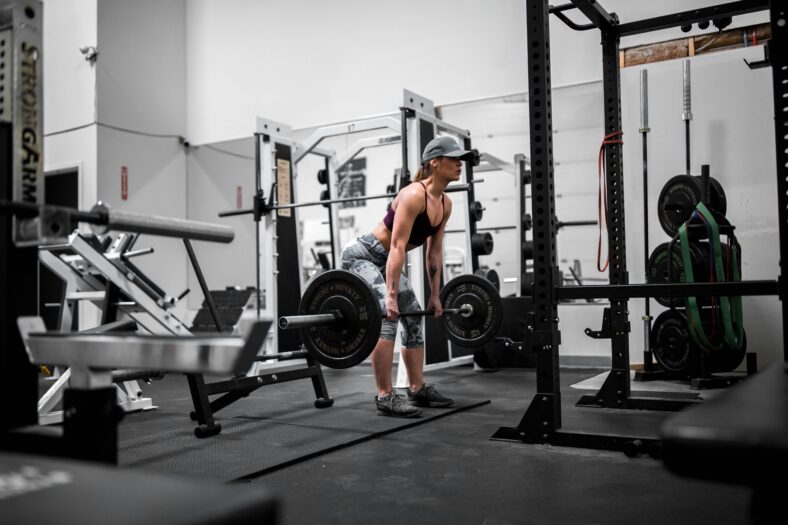
Once you’ve established low impact workouts, you’ll need to find ways to make the exercises harder in order to advance. Here are some tips for doing it securely:
Work Out For Longer: According to Walker, a reasonable rule of thumb to reduce the risk of injury is to lengthen your workouts by no more than 10% (total) each week. For instance, if you walk, cycle, or swim for 90 minutes over three sessions one week, aim for 99 minutes over three sessions the following week.
Up the Pace: If you’re used to doing leisurely activities like walking, cycling, rowing, elliptical training, or swimming, try to move into a moderate-intensity zone. And if you’re already exerting moderate effort, try moving a little bit more quickly. Walker advises measuring your intensity by your breathing. You’ll know you’re operating at a moderate intensity if you’re only able to speak in fragments of sentences. If you’re struggling to speak more than a few words, you’re in a high-intensity zone.
Add Resistance: Milton advises beginning with sets of 10 to 15 repetitions while strength training. She advises increasing weight by 5% after you can finish all reps with proper form and no signs of weariness. When you finish your set feeling like you have one or two more reps left before your form falters, you’ll know the weight is right.
Interval Training: McSorley advises alternating brief bursts of high-intensity work with lower-intensity work. Consider cycling for 30 seconds at your hardest effort, followed by 30 seconds of easy cycling to recover. Repeat. The National Academy of Sports Medicine advises beginning with fewer repetitions and increasing from there for low impact workouts.
Effective Eating

Before: Your pre-workout BFF is carbs. “Carbohydrates turn into glucose and provide your body with easily-digestible energy to fuel your low impact workouts,” adds Mary Wirtz, RD, CSSD, a board-certified sports dietitian and consultant at Mom Loves Best, based in Colorado Springs. If it has been longer than three hours since your previous meal, you might want to have a modest carb-rich snack 45 minutes before to working out. Wirtz advises:
- A fruit
- 1 spoonful of honey on a slice of toast
- Graham crackers in a dish
Reduce your intake of fat, protein, and fiber because these “take longer to digest and may leave you feeling full and uneasy before the workout,” advises Wirtz.
According to the International Sports Sciences Association (ISSA), eating before a morning workout (before your first meal of the day) may not be necessary if your workout is brief (30 to 45 minutes) or low-intensity (such as strolling, yoga, or tai chi). However, you should eat something beforehand if you have a longer (60 to 90 minutes), moderate to intense (such as jogging, resistance training, or cycling) morning workout scheduled; take into account the same little, carb-rich snacks indicated above.
During: If your low impact workouts last more than an hour, it’s a good idea to eat some carbohydrates and electrolytes, advises Wirtz. Both are offered by a sports drink with carbs in a convenient form. Shorter workouts only need water, according to Wirtz.
After: Within an hour following your workout, eat some protein and carbohydrates. When it’s time to eat again, Wirtz advises:
- A Greek yogurt-based fruit smoothie; two pieces of toast
- Sauteed vegetables and eggs in a whole-grain wrap
- Cereal made with berries; a turkey sausage side
Final Thoughts
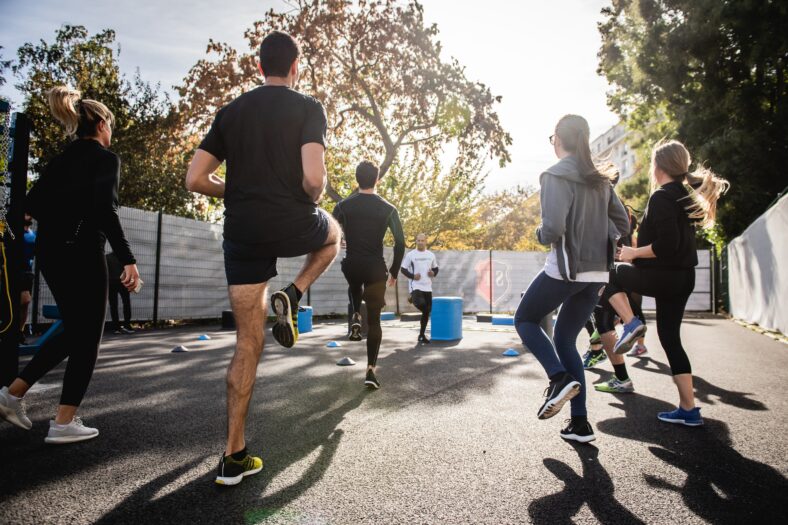
You’ve probably noticed that there are many of options for low impact workouts. You won’t ever have to skip a muscle group again with the training options and advice provided above. Additionally, your poor knees no longer require you to postpone getting in shape or taking advantage of exercise’s numerous health advantages.
Aches and pains are never enjoyable. We advise working around the pain, nevertheless, to keep your body strong. This expression refers to making exercise adjustments and substitutions that let you keep up your training while reducing pain. This article’s main goal is to keep you lifting and crushing your challenging 6-day training schedule despite any joint problems you may be experiencing.
Low impact workouts have equal advantages to exercise with high impact, including better heart health, a lower risk of diabetes, stronger bones, and better brain function. However, low impact workouts are more manageable for most people since it places less stress on the joints, muscles, and connective tissues. Low impact workouts can come with risks, though. Start out slowly and increase over time.

